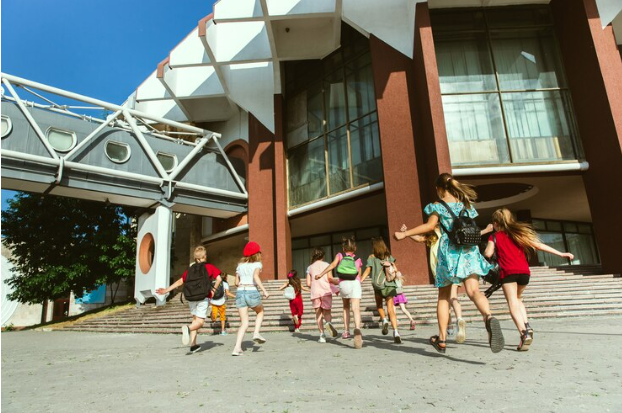foto: freepik.com
Brilio.net - In recent years, child-friendly schools have become a major concern in Indonesia. Child-friendly schools place the interests and welfare of children as the main priority in education. With a focus on a supportive learning environment , positive interactions between teachers and students, and the development of social and emotional skills, these schools are an important vehicle for creating examples of child-friendly schools in Indonesia.
With this approach, examples of child-friendly schools not only seek to improve academic achievement, but also form individuals who are tough, caring and competitive in the global era. As is known, child-friendly schools are an initiative of the Ministry of Women's Empowerment and Child Protection (KPPPA) to prevent and reduce cases of violence and bullying that occur in the school environment.
Examples of child-friendly schools or commonly abbreviated as SRA play a very important role and have a significant impact on the world of education in Indonesia. Child-friendly schools have a positive impact through the basic principles used, the goals created, and programs that help children feel safe and confident in the school environment.
If you are curious and want to know more about examples of child-friendly schools, here brilio.net collected from various sources, Friday (23/2), an explanation of examples of child-friendly schools complete with their meaning and objectives.
Definition of child-friendly school.

photo: freepik.com
Child-friendly schools are an educational concept that pays special attention to the needs, rights and welfare of children. Child-friendly schools aim to create an educational environment that is safe, comfortable and supports children's holistic development. Apart from focusing on academic aspects, this school also pays attention to the social, emotional and health aspects of children.
In Indonesia, child-friendly schools ensure that children receive their rights in accordance with the Child Protection Law. This includes the right to quality education, a safe and healthy environment, and protection from all forms of violence and discrimination. Child-friendly schools must also support government initiatives in creating inclusive education that accepts and provides education for all children, including those with special needs.
Child-friendly schools also involve children in decision making at the school level, provide space for children's active participation in educational activities, and provide protection from all forms of abuse and exploitation. Thus, child-friendly schools in Indonesia support the creation of a safe, inclusive and supportive educational environment for children's development.
The aim of the school is child friendly.

photo: freepik.com
Child-friendly schools provide a learning environment that complies with Indonesian regulations and prioritizes safety and support. Child-friendly schools aim to provide a safe and comfortable learning environment for students by preventing violence, discrimination, intimidation and harassment.
Child-friendly schools aim to nurture children in every aspect of their lives, ensuring their physical, emotional, social and intellectual well-being. It's all about creating a holistic environment for their growth and development.
Child-friendly schools not only empower students to have a voice in school affairs, but also work to involve parents and the community in building a nurturing educational atmosphere for children. Child-friendly schools are designed to create a positive and respectful learning environment for children in accordance with Indonesian regulations.
Child-friendly school principles.

photo: freepik.com
In accordance with applicable regulations in Indonesia based on the 2015 Child Friendly School Guidelines from the Ministry of PPPA, child friendly schools have the following basic principles:
1. Safety and protection.
Schools must provide a safe environment and protect children from all forms of violence, neglect and exploitation.
2. Participation and involvement.
Children must be involved in decisions that affect their lives and education at school.
3. Non-discrimination.
Every child has the right to receive education without discrimination based on gender, ethnicity, religion or socio-economic conditions.
4. Affordability.
Education must be accessible to all children, including those who have special needs or come from disadvantaged families.
5. Quality education.
Child-friendly schools must provide quality education that is appropriate to children's developmental needs.
6. Fair treatment.
Every child must be treated fairly and respected regardless of their background or condition.
Example of a child-friendly school.

photo: freepik.com
1. Adiwiyata School.
Adiwiyata School is a school created by the Ministry of the Environment and the Ministry of Education. This school aims to increase students' awareness of the importance of protecting the environment and carrying out sustainable development.
2. Safe Schools.
Safe Schools are schools created by the Ministry of Education and Culture in order to protect students when disasters and other sudden disasters occur. Apart from that, this school also acts as a forum for improving student achievement in academic and non-academic fields.
3. Inclusive Schools.
Inclusive Schools are also created by the Ministry of Education and Culture which provide education equally, including for children with special needs. In this way, this school opens up opportunities for anyone to develop their potential intelligence or talents.
4. Education for Independent Children.
Independent Children's Education is a school that supports and fosters student independence and creates a conducive and comfortable classroom atmosphere when learning.
5. Child Friendly Islamic Boarding School.
As the name suggests, Child Friendly Islamic Boarding Schools apply Islamic boarding school values and provide comfort for students. Starting from the environment, facilities and infrastructure, as well as the learning that is created to realize fair rights for students.
6. Anti-Violence School.
This school, created by the Ministry of Education and Culture, aims to protect students from all forms of violence that may occur at school. So children will feel safe and don't have to worry about being bullied at school.
7. Snacks for school children.
Apart from maintaining student comfort and safety, child-friendly schools must also pay attention to the health of the environment and food at school. The existence of School Children's Snacks helps students to be able to maintain the environment and the food they consume at school to stay healthy.
(brl/jad)